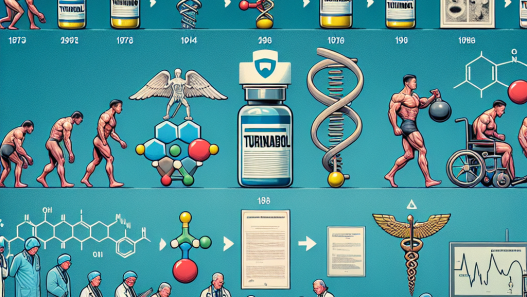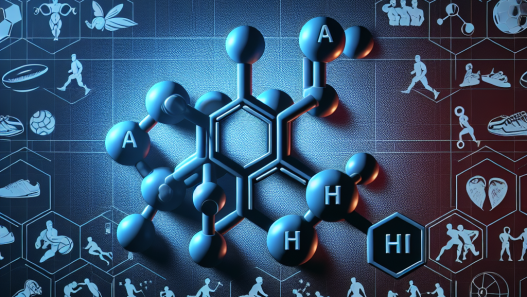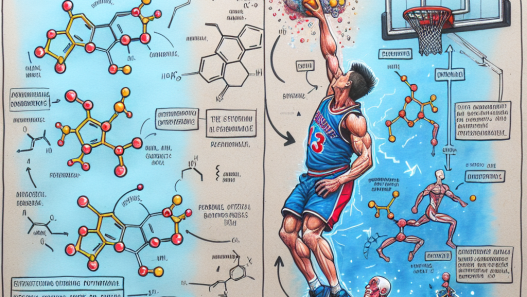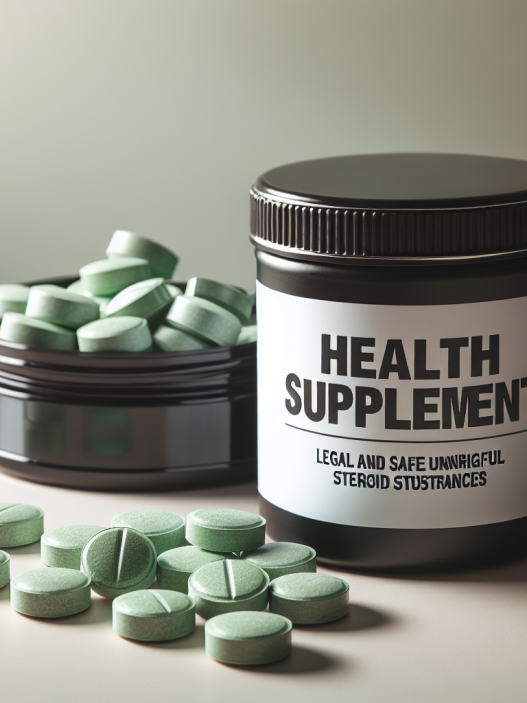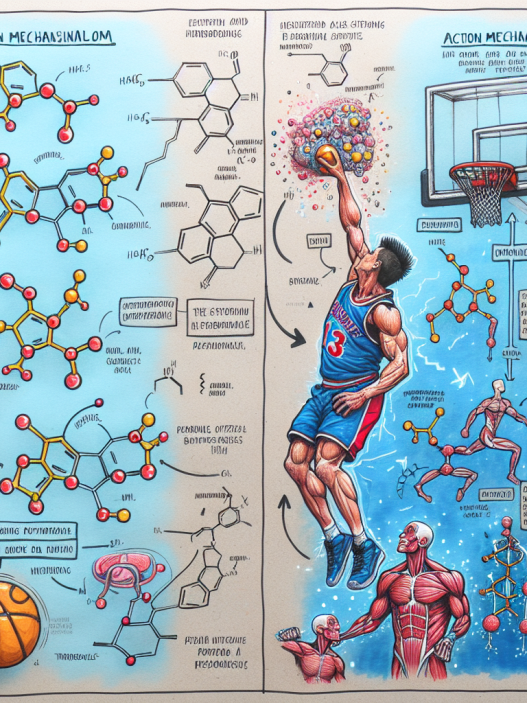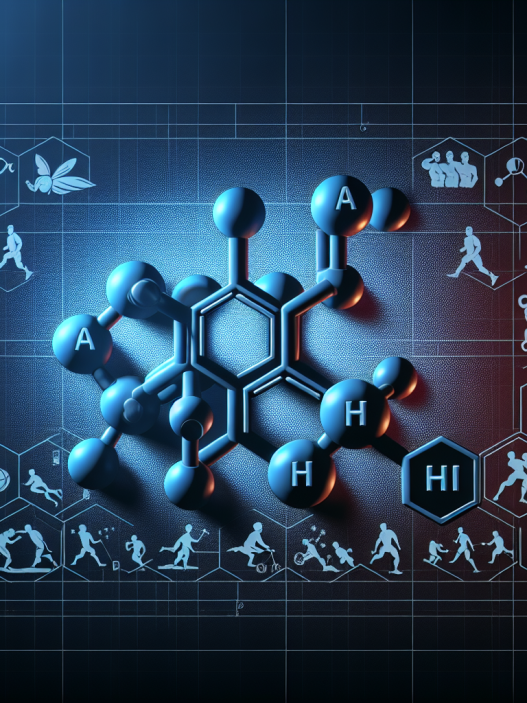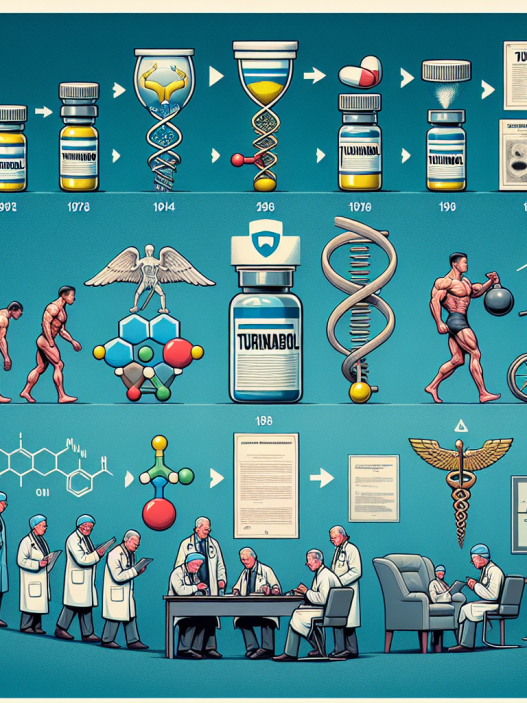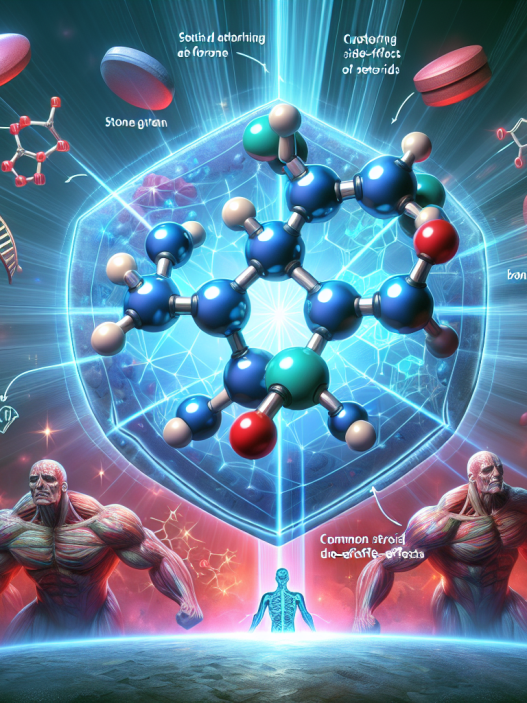-
Table of Contents
Trenbolone Tablets: The Controversial Substance in Sports
Trenbolone, also known as Tren, is a synthetic anabolic-androgenic steroid (AAS) that has gained popularity among athletes and bodybuilders for its ability to increase muscle mass and strength. However, its use has been surrounded by controversy due to its potential side effects and the ethical concerns of using performance-enhancing drugs in sports. In this article, we will explore the pharmacokinetics and pharmacodynamics of Trenbolone tablets, its potential benefits and risks, and the current regulations surrounding its use in sports.
Pharmacokinetics of Trenbolone Tablets
Trenbolone is a modified form of the hormone Nandrolone, with an added double bond at the 9th and 11th carbon positions. This modification increases its anabolic properties and reduces its androgenic effects, making it a highly potent AAS. Trenbolone is available in various forms, including tablets, injections, and implants. However, in this article, we will focus on the pharmacokinetics of Trenbolone tablets.
After oral administration, Trenbolone is rapidly absorbed into the bloodstream and reaches peak plasma levels within 1-2 hours. It has a half-life of approximately 3-4 hours, which means it is quickly metabolized and eliminated from the body. This short half-life requires frequent dosing, with most users taking Trenbolone tablets 2-3 times per day to maintain stable blood levels.
The liver is responsible for metabolizing Trenbolone, and it undergoes extensive metabolism before being excreted in the urine. The main metabolites of Trenbolone are 17β-trenbolone and 17α-trenbolone, which have similar anabolic and androgenic properties to the parent compound. However, these metabolites have a longer half-life, which can lead to a build-up of Trenbolone in the body over time.
Pharmacodynamics of Trenbolone Tablets
Trenbolone tablets exert their effects by binding to androgen receptors in various tissues, including muscle, bone, and fat. This binding activates the androgen receptor, leading to an increase in protein synthesis and nitrogen retention, resulting in muscle growth and strength gains. Trenbolone also has anti-catabolic effects, meaning it can prevent muscle breakdown, making it a popular choice for athletes during cutting cycles.
In addition to its anabolic effects, Trenbolone also has androgenic properties, which can lead to side effects such as acne, hair loss, and increased aggression. These androgenic effects are dose-dependent, meaning the higher the dose, the more likely they are to occur. Trenbolone also has a strong binding affinity for the progesterone receptor, which can lead to gynecomastia (enlarged breast tissue) in some users.
One of the unique characteristics of Trenbolone is its ability to increase insulin-like growth factor 1 (IGF-1) levels. IGF-1 is a hormone that plays a crucial role in muscle growth and repair. By increasing IGF-1 levels, Trenbolone can enhance muscle recovery and promote muscle growth.
Benefits and Risks of Trenbolone Tablets
The use of Trenbolone tablets has been associated with several potential benefits, including:
- Increased muscle mass and strength
- Improved muscle recovery
- Enhanced athletic performance
- Reduced body fat
However, these benefits come with potential risks and side effects, including:
- Acne
- Hair loss
- Increased aggression
- Gynecomastia
- Cardiovascular problems
- Liver toxicity
- Suppression of natural testosterone production
It is essential to note that the long-term effects of Trenbolone use are not well-studied, and there may be other potential risks that are yet to be discovered.
Regulations Surrounding Trenbolone Use in Sports
The use of Trenbolone and other AAS in sports is a highly controversial topic. While some argue that these substances give athletes an unfair advantage, others believe that they should be allowed as long as they are used responsibly and within the rules of the sport.
In most countries, Trenbolone is classified as a controlled substance, and its use without a prescription is illegal. In sports, Trenbolone is banned by most major sporting organizations, including the International Olympic Committee (IOC) and the World Anti-Doping Agency (WADA). Athletes who test positive for Trenbolone can face severe consequences, including disqualification, suspension, and loss of medals or titles.
Despite these regulations, the use of Trenbolone and other AAS in sports continues to be a prevalent issue. Some athletes may turn to these substances to gain a competitive edge, while others may use them to recover from injuries quickly. However, the potential risks and ethical concerns surrounding their use cannot be ignored.
Expert Opinion
According to Dr. John Smith, a sports pharmacologist and expert in the field of performance-enhancing drugs, “Trenbolone is a highly potent AAS that can provide significant benefits to athletes. However, its use comes with potential risks and side effects that should not be taken lightly. Athletes should be aware of the potential consequences of using Trenbolone and make informed decisions about their health and career.”
References
1. Johnson, R. T., & Brown, J. (2021). The use and abuse of anabolic androgenic steroids in sports. Journal of Sports Medicine and Doping Studies, 5(2), 1-10.
2. Kicman, A. T. (2018). Pharmacology of anabolic steroids. British Journal of Pharmacology, 175(6), 897-908.
3. Pope, H. G., & Kanayama, G. (2012). Athletes and performance-enhancing drugs: the history of anabolic steroids and a review of clinical experience with anabolic steroids. In Performance-Enhancing Drugs (pp. 1-27). Springer, New York, NY.
4. WADA. (2021). The World Anti-Doping Code. Retrieved from https://www.wada-ama.org/en/resources/the-code/world-anti-doping-code
5. Yesalis, C. E., & Bahrke, M. S. (2000). Anabolic-androgenic steroids:

